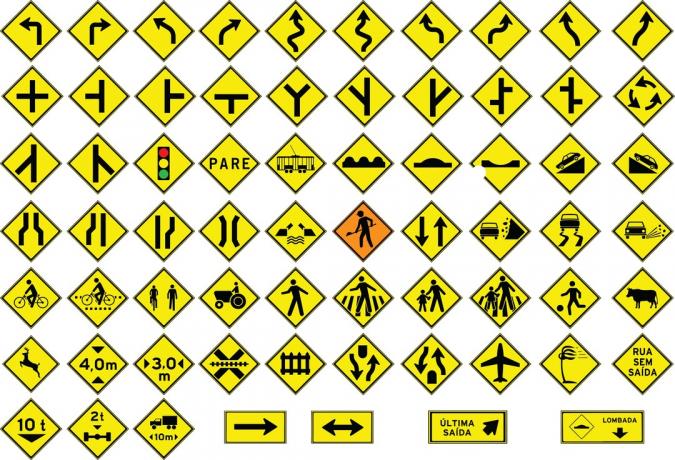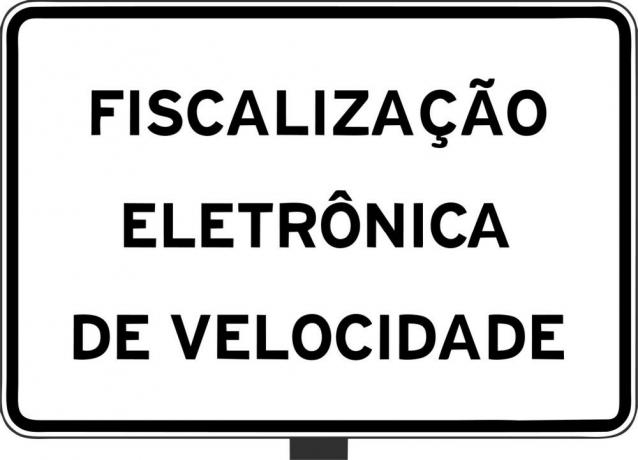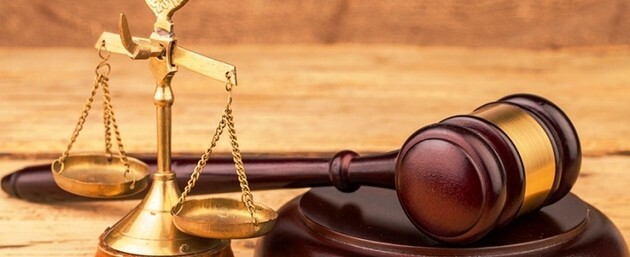Traffic signs are signs permanent or temporary places on the streets to guide pedestrians, drivers and cyclists.
The plates are composed of words or symbols known to drivers. Before obtaining a license to drive vehicles, one of the requirements for having a license is knowledge of the license plates.
They help to avoid accidents and the control traffic. Traffic signs can be of 7 types: regulation, warning, indication, educational, ancillary services, tourist attractions and signaling works.
Who establishes the road signs in Brazil is the National Traffic Council (Contra).
Types of road signs
Regulation Boards

The regulatory plates are round in white and black, with a red border. Only the "Mandatory Stop" and "Give preference" signs do not follow the circular pattern.
Failure to obey a regulatory sign constitutes a traffic violation. It is these boards that signal the prohibitions, the obligations and conditions of the streets and roads.
Each of the regulatory plates has a name, they all start with the letter R and the numbering right after.
- R-1 Mandatory stop
- R-2 Preferably
- R-3 Prohibited way
- R-4A It is forbidden to turn left
- R-4B Forbidden to turn right
- R-5A Forbidden to return to left
- R-5B Forbidden to return to the right
- R-6A No Parking
- R-6B Regulated parking
- R-6C Stopping and parking prohibited
- R-7 No passing
- R-8A Prohibited to change lanes or lanes from left to right
- R-8B Prohibited changing lanes or lanes from right to left
- R-9 Trucks are prohibited
- R-10 Prohibited the transit of motor vehicles
- R-11 Prohibited the transit of animal-drawn vehicles
- R-12 Prohibited the transit of bicycles
- R-13 Prohibited the transit of tractors and works machines
- R-14 Allowed total gross weight
- R-15 Maximum height allowed
- R-16 Maximum width allowed
- R-17 Maximum allowed weight per axle
- R-18 Maximum allowed length
- R-19 Maximum speed allowed
- R-20 It is forbidden to sound the horn or beep
- R-21 customs
- R-22 Mandatory use of current
- R-23 keep to the right
- R-24A Road or runway traffic direction
- R-24B Obligatory passage
- R-25A Turn left
- R-25B Turn right
- R-25C Go ahead or left
- R-25D Go straight or right
- R-26 Go straight on
- R-27 Buses, trucks and large vehicles, keep to the right
- R-28 Double direction of circulation
- R-29 Pedestrian traffic prohibited
- R-30 Pedestrian, walk left
- R-31 Pedestrian, walk right
- R-32 Exclusive bus circulation
- R-33 Direction of traffic at the roundabout
- R-34 Exclusive circulation of bicycles
- R-35A Cyclist, ride left
- R-35B Cyclist, ride on the right
- R-36A Cyclists on the left, pedestrians on the right
- R-36B Pedestrians on the left, cyclists on the right
- R-37 Prohibited the transit of motorcycles, scooters and mopeds
- R-38 Bus transit prohibited.
- R-39 Exclusive truck circulation
- R-40 Traffic forbidden to wheelbarrows.
Warning Signs

Warning signs are those that inform drivers, cyclists and also pedestrians about the conditions of a street or road. Especially, warning of the dangers.
These plates, for the most part, have the shape of an inverted square and are yellow in color. Like regulatory plates, warning plates have a name, which begins with the letter A followed by a number.
- A-1A sharp left turn
- A-1B sharp turn to the right
- A-2A left turn
- A-2B Right turn
- A-3A winding lane on the left
- A-3B Winding track on the right
- A-4A Sharp left S curve
- A-4B Sharp S curve to the right
- A-5A left S curve
- A-5B right S curve
- A-6 Roads crossing
- A-7A Side lane left
- A-7B side road on the right
- A-8 T-intersection
- A-9 Y bifurcation
- A-10A Oblique junction to the left
- A-10B Oblique junction on the right
- A-11A Opposite successive junctions, the first one on the left
- A-11B Successive opposite joins, the first one on the right
- A-12 circle intersection
- A-13A confluence left
- A-13B right confluence
- A-14 Signal Ahead
- A-15 Mandatory stop ahead
- A-16 Tram
- A-17 uneven track
- A-18 bump or spine
- A-19 Depression
- A-20A steep slope
- A-20B steep slope
- A-21A Narrowing of lane to the center
- A-21B Lane narrowing left
- A-21C Lane narrowing on the right
- A-21D Lane widening on the left
- A-21E Lane widening on the right
- A-22 narrow bridge
- A-23 movable bridge
- A-24 Construction
- A-25 double hand ahead
- A-26A One way
- A-26B Double meaning
- A-27 landslide area
- A-28 Slippery track
- A-29 gravel projection
- A-30A cyclist traffic
- A-30B Signposted crossing for cyclists
- A-30C Shared traffic for cyclists and pedestrians
- A-31 Transit of tractors or agricultural machinery
- A-32A pedestrian traffic
- A-32B Signposted pedestrian crossing
- A-33A School area
- A-33B Signposted passage for schoolchildren
- A-34 Children
- A-35 Animals
- A-36 Wild animals
- A-37 limited height
- A-38 limited width
- A-39 Barrier-free level crossing
- A-40 Level crossing with barrier
- A-41 St. Andrew's Cross
- A-42A Dual track start
- A-42B end of double lane
- A-42C split track
- A-43 Airport
- A-44 sidewind
- A-45 Dead end street
- A-46 Limited total gross weight
- A-47 Limited weight per axle
- A-48 Limited length.
Educational Signs

Educational signs are usually rectangular with a black border and letters, with a white background. They have the function of guiding and teaching good practices for drivers, cyclists and pedestrians.
Examples of educational plaques are indications such as "Use the seat belt","In fog, slow down" or "Obey the signage".
Indication Boards

Signposts are those that show destinations and distances. It has blue or green colors with white borders and letters. These are the types of signs that guide routes, indicate exits and entrances to roads, places to make a return, among others.
Auxiliary Services Boards

Auxiliary service signs are those that indicate, mainly on roads, activities and places that may be helpful, such as gas stations, airports, restaurants, public telephones and the presence of hotels or hospitals in the vicinity.
Tourist Attraction Signs

They are the signs of tourist attractions that show to those who transit on the streets and roads attractions and interesting places for tourism in a region. They are brown with white lettering.
Works Signaling Boards

These boards are used exclusively for guide traffic in case of works on roads and streets. They are temporary signs, because they only remain in place while the works are taking place. Construction signage signs are always orange.
See too what is a traffic light.



